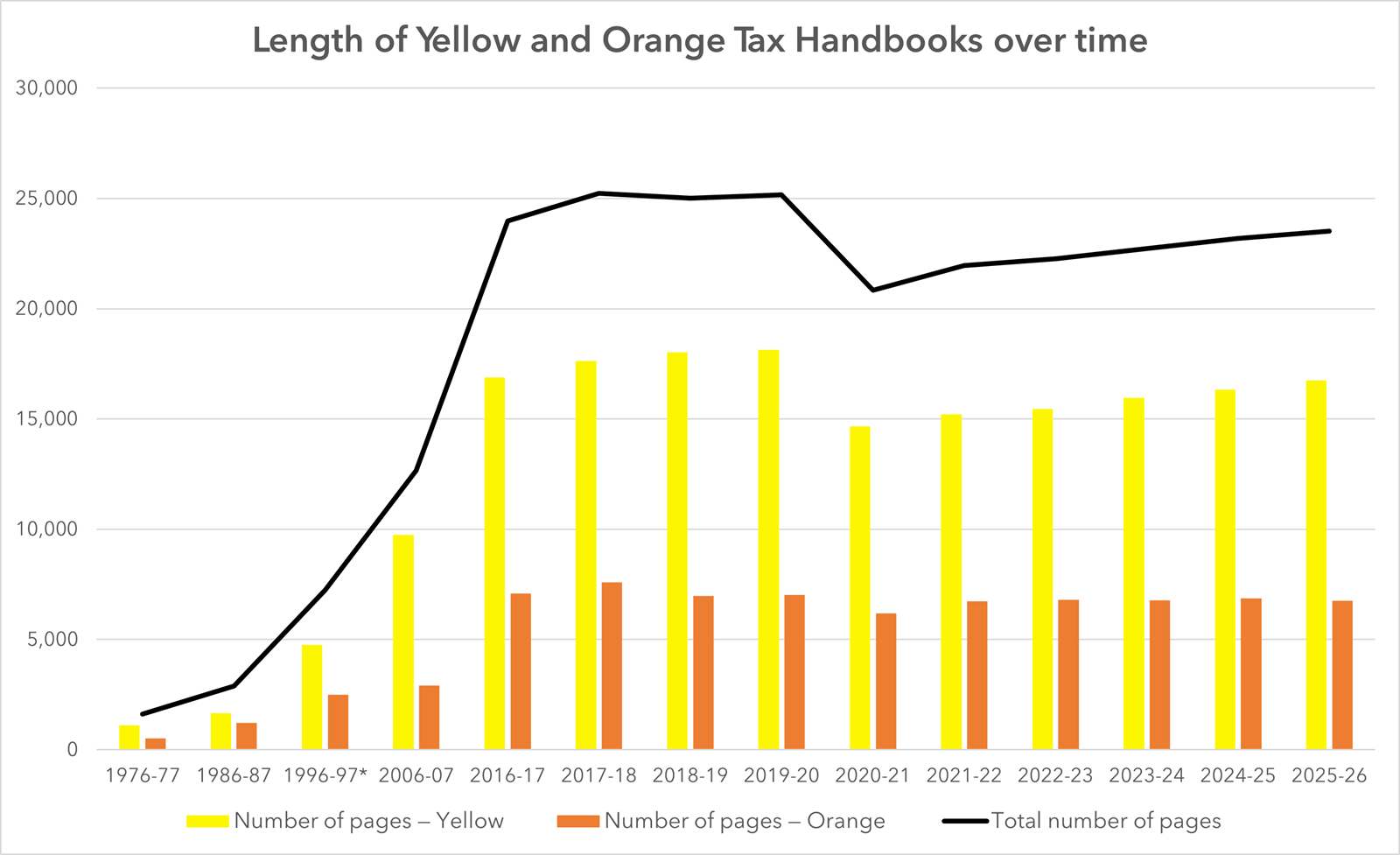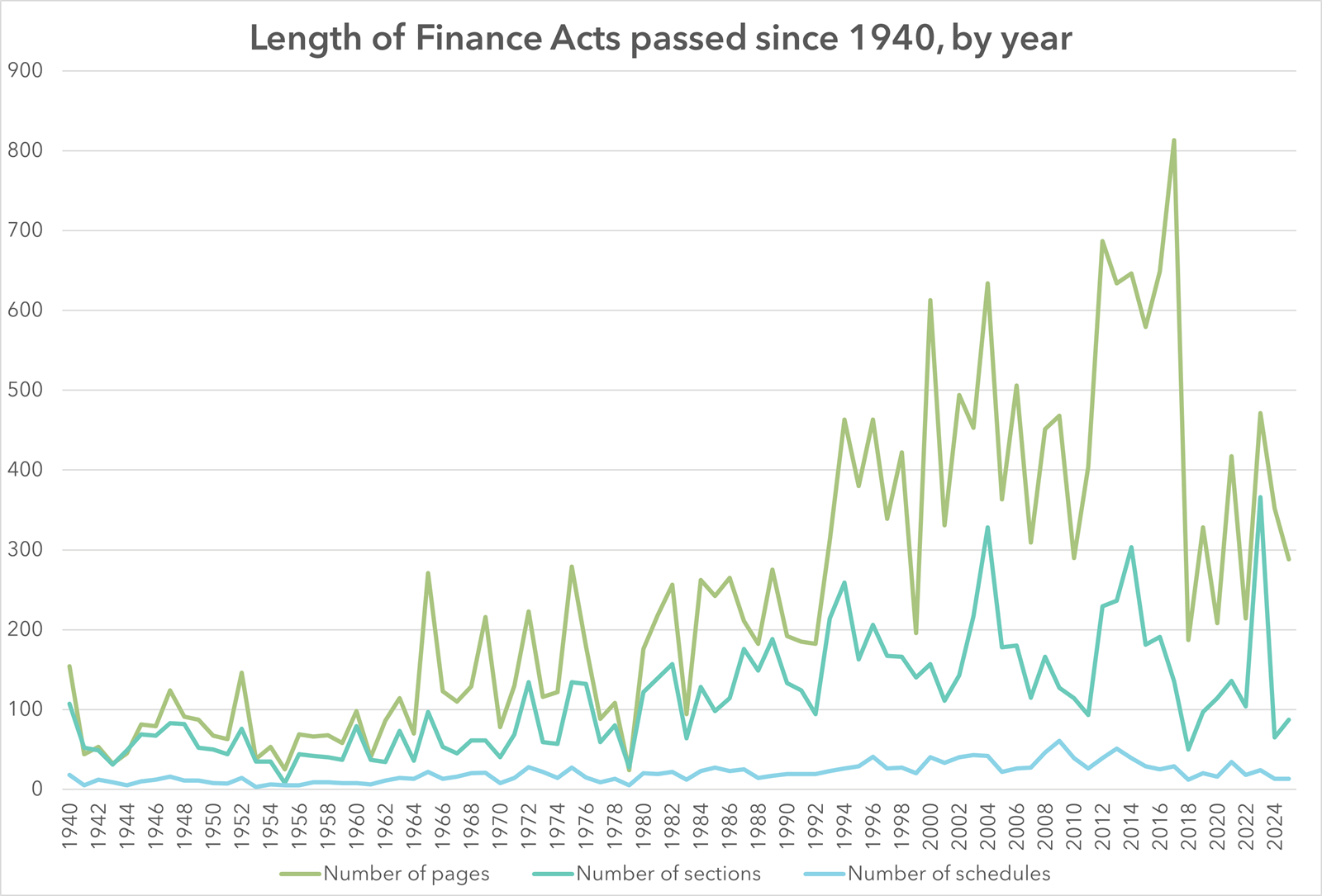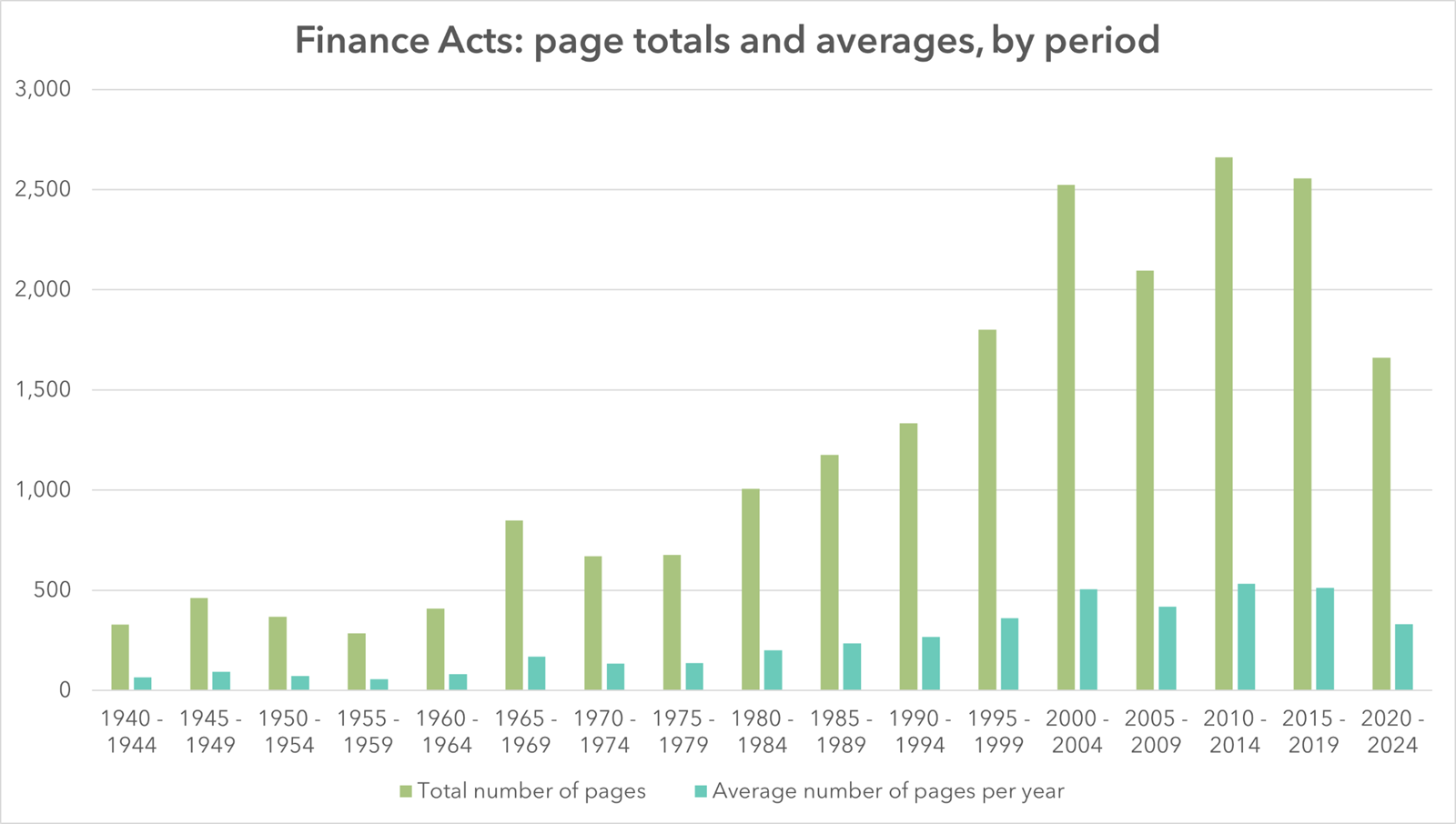Whilst, as the Office of Tax Simplification have noted, longer legislation 'can be clearer and easier to use' (p. 2), the length of the UK's tax legislation is often used as an indicator of the complexity of the country's tax regime. Below, we consider two of the most popular methods through which this length — and its changes over time — can be (approximately) measured.
Length of the Yellow and Orange Tax Handbooks
Perhaps the most common proxy measure of the total extent of UK tax legislation in any given year is the combined length of that year's Yellow and Orange Tax Handbooks. The Handbooks have been published annually since 1976, and the Library holds a copy of every edition.
Each edition of the Yellow Handbook reproduces the fully amended text of all of the direct tax legislation in force in the UK at the date of publication, whilst the Orange Handbook does the same for indirect tax. Taken together, therefore, the Handbooks have some merit as rough indicators of the total length of the UK tax code at particular points in time.
That said, there are a number of caveats that one ought to be aware of when using them for this purpose:
- Not all of the material included in the Handbooks is current legislation, or indeed statutory material at all. Both books are liable to include additional material such as editors' footnotes, repealed and revoked legislation, statements of practice, interpretations, press releases, and index pages — though the range and volume of such material has changed over time. In a report published in 2012 (p.14), the Office of Tax Simplification estimated that only around 34.3% (or about 6,102 pages) of the 2010-11 Handbooks is taken up by actual substantive UK tax legislation.
- Certain editions include statutes which have tax-related ramifications, but which are not strictly tax legislation. Some reproduce statutes on employment, for instance.
- Material is sometimes duplicated within a single edition. For example, identical extracts from certain statutes may appear in more than one volume.
- Some editions include EU legislation which may not necessarily have been incorporated into UK law. This is the case for the 2023-24 edition, for example.
- There have been occasional changes to page layouts, page sizes, and font sizes. In 2010, for instance, the amount of space around some of the headings was reduced slightly.
- The date at which the legislation was compiled varies from year-to-year. For instance, the 1976-77 Handbooks give the law as operative at 6 August 1976, whereas the 1996-97 editions set out the Acts as operative at 29 April 1996.
By way of an indicative illustration, figures on the length of the Handbooks for 1976-77, 1986-87, 1996-97, 2006-07, and 2016-17 onwards are set out below — first in the form of a chart, and then in a table. These figures ought to be considered in light of the caveats outlined above.

| Year | Number of pages — Yellow | Number of pages — Orange | Total number of pages |
|---|---|---|---|
| 1976-77 | 1,111 | 515 | 1,626 |
| 1986-87 | 1,669 | 1,221 | 2,890 |
| 1996-97 | 4,750* | 2,500* | 7,250* |
| 2006-07 | 9,742 | 2,922 | 12,664 |
| 2016-17 | 16,891 | 7,090 | 23,981 |
| 2017-18 | 17,633 | 7,599 | 25,232 |
| 2018-19 | 18,016 | 6,985 | 25,001 |
| 2019-20 | 18,129 | 7,027 | 25,156 |
| 2020-21 | 14,657 | 6,179 | 20,836 |
| 2021-22 | 15,224 | 6,733 | 21,957 |
| 2022-23 | 15,461 | 6,803 | 22,264 |
| 2023-24 | 15,961 | 6,769 | 22,730 |
| 2024-25 | 16,326 | 6,859 | 23,185 |
Some editions of the Handbooks have unusual page numbering systems, with frequent jumps in page numbers. This can make it difficult to accurately count the number of pages in a given edition.
As a result, the figures given for 1996-97 (marked *) are estimates, calculated based on the physical size of the volumes.
Whilst the other figures given are based on actual counts rather than approximate calculations, we cannot exclude the possibility of counting errors having taken place.
Readers should satisfy themselves that the figures given above are suitable for the purposes for which they wish to use them.
Length of Finance Acts
Another (partial) indicator as to the fluctuating extent of legislative intervention in the tax regime is the length of published Finance Acts.
Please see below for a graph showing figures on the number of sections, schedules and pages contained in all Finance Acts passed since 1940, by year.


Pre-2016 data on the length of Finance Acts are adapted from 'Big Ben’s Statutory Tax Burden', an annual monitor of tax complexity published by ICAEW's Tax Faculty from 2005 until c. 2016.
In 1940, 1945, 1947, 1955, 1964, 1970, 1975, 1979, 1983, 1987, 1992, 1997, 2005, 2015, 2017, 2023, and 2024 there were two Finance Acts; in 2010 there were three. The figures given for these years are cumulative totals covering all of the Finance Acts passed during the calendar year in question.
In 1987 the page format of Finance Acts was changed from A5 to A4. However, the average number of words per page appears not to have changed significantly as a result of this. Therefore, all page counts are given without adjustment.
Can't find what you're looking for?
The ICAEW Library can give you the right information from trustworthy, professional sources that aren't freely available online. Contact us for expert help with your enquiries and research.
Building a better tax system for the UK
ICAEW’s Tax Faculty draws on its members’ expertise to examine hot topics in tax and provide practical solutions to challenges faced by policymakers and regulators.

ICAEW accepts no responsibility for the content on any site to which a hypertext link from this site exists. The links are provided ‘as is’ with no warranty, express or implied, for the information provided within them. Please see the full copyright and disclaimer notice.
Contact the library
Expert help for your enquiries and research.

